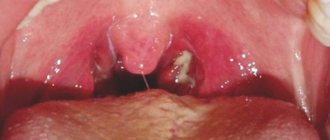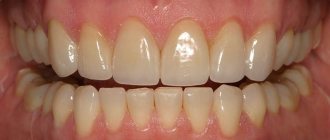The world around us is full of amazing wonders, but we often do not pay attention to them. Admiring the clear blue of the spring sky or the bright colors of the sunset, we don’t even think about why the sky changes color as the time of day changes.
We are accustomed to the bright blue on a fine sunny day and to the fact that in the fall the sky becomes hazy gray, losing its bright colors. But if you ask a modern person why this happens, the vast majority of us, once armed with school knowledge of physics, are unlikely to be able to answer this simple question. Meanwhile, there is nothing complicated in the explanation.
What is color?
From the school physics course we should know that differences in the color perception of objects depend on the wavelength of light. Our eye is able to distinguish only a fairly narrow range of wave radiation, with the shortest waves being blue and the longest being red. Between these two primary colors lies our entire palette of color perception, expressed by wave radiation in different ranges.
A white ray of sunlight actually consists of waves of all color ranges, which is easy to see by passing it through a glass prism - you probably remember this school experience. In order to remember the sequence of changes in wavelengths, i.e. sequence of colors of the daylight spectrum, a funny phrase about a hunter was invented, which each of us learned at school: Every Hunter Wants to Know, etc. Since red light waves are the longest, they are less susceptible to scattering when passing through. Therefore, when you need to visually highlight an object, they use predominantly red color, which is clearly visible from afar in any weather.
Therefore, a prohibitory traffic light or any other danger warning light is red, not green or blue.
Why does the sky turn red at sunset?
In the evening hours before sunset, the sun's rays fall on the surface of the earth at an angle, and not directly. They have to overcome a much thicker layer of atmosphere than in the daytime, when the surface of the earth is illuminated by the direct rays of the Sun.
At this time, the atmosphere acts as a color filter, which scatters rays from almost the entire visible range, except for red ones - the longest and therefore most resistant to interference. All other light waves are either scattered or absorbed by particles of water vapor and dust present in the atmosphere.
The lower the Sun falls relative to the horizon, the thicker the layer of atmosphere the light rays have to overcome. Therefore, their color is increasingly shifting towards the red part of the spectrum. A folk superstition is associated with this phenomenon, saying that a red sunset foretells a strong wind the next day. The wind originates in high layers of the atmosphere and at a great distance from the observer. Oblique rays of the sun highlight the emerging zone of atmospheric radiation, in which there is much more dust and vapor than in a calm atmosphere. Therefore, before a windy day we see a particularly red, bright sunset.
Formations around the mouth
The appearance of red patches around the mouth that may crack and peel is medically called perioral dermatitis. Another name for this disease is cheilitis. If measures are not taken in a timely manner, in addition to spots, a rash forms, and sometimes turns into purulent pimples.
Doctors include the following main provoking factors:
- Irritating effects of natural factors: frosty air, strong wind, direct sunlight, constant humidity.
- Deficiency of vitamins A, B and C causes serious disruptions in the body's defenses. The skin suffers.
- Low-quality cosmetics affect the most delicate areas of the skin. With long-term use.
- Lack of water in the body, or dehydration, dries out the skin around the mouth, especially at high temperatures.
- Dry facial skin will regularly suffer from any influence.
- Allergic reactions to food, pollen, dust.
- The risk group consists of adolescents whose androgen levels are slightly higher than normal. The skin constantly dries out and causes red spots to form.
Cheilitis is treated comprehensively; methods are selected depending on the complexity of the pathology. Taking tablets and medicinal ointments is recommended, and sometimes you can just get by with a few masks.
Here is a list of procedures that are prescribed:
- Lubricating the area around the mouth with fatty creams, diluting them with essential oils;
- Taking a complex of vitamins and minerals;
- Replenishing water balance in the body;
- The intake of brewer's yeast enriched with potassium and calcium is indicated;
- Using natural masks based on aloe juice;
- Allergic irritations require elimination of the allergen;
- Mix a solution of iodine and olive oil, apply to the red skin around the mouth daily;
- Use natural cosmetic creams with olive extract;
- Sometimes the doctor prescribes medications and treatments.
We suggest you familiarize yourself with Stomatitis in pregnant women treatment
Why is the sky blue during the day?
Differences in light wavelengths also explain the clear blue of the daytime sky. When the sun's rays fall directly on the surface of the earth, the layer of atmosphere they overcome has the smallest thickness.
Scattering of light waves occurs when they collide with the molecules of gases that make up the air, and in this situation, the short-wavelength light range turns out to be the most stable, i.e. blue and violet light waves. On a fine, windless day, the sky acquires amazing depth and blueness. But why do we then see blue and not violet in the sky?
The fact is that the cells in the human eye that are responsible for color perception perceive blue much better than violet. Still, violet is too close to the border of the perception range.
This is why we see the sky bright blue if there are no scattering components in the atmosphere other than air molecules. When a sufficiently large amount of dust appears in the atmosphere - for example, in a hot summer in the city - the sky seems to fade, losing its bright blue.
Gray sky of bad weather
Now it’s clear why autumn bad weather and winter slush make the sky hopelessly gray. A large amount of water vapor in the atmosphere leads to the scattering of all components of a white light beam without exception. Light rays are crushed into tiny droplets and water molecules, losing their direction and mixing throughout the entire range of the spectrum. Therefore, light rays reach the surface as if passed through a giant scattering lampshade. We perceive this phenomenon as the grayish-white color of the sky. As soon as moisture is removed from the atmosphere, the sky again becomes bright blue.
Read this:
November 6, 2011 The sunset over Los Angeles was almost blood red and the Sun was huge. The sky surrounding the Sun was also bright orange-red. It was an amazing sight. People stopped on the road to watch him. I guess this is Planet X getting closer? And the redness was due to the tail, and the increase in the Sun was also due to the red color of the dust? [and from another] November 5, 2011 This photo was taken just before sunrise near Kokomo, Indiana. Since late summer last year I have often seen pink clouds like these and increasingly blood red pre-dawn skies on clear days. November 3, 2011 This photo on a cloudy day was taken about an hour after sunrise, note that the sun is peeking through the clouds and that the clouds near the horizon are pink. About two and a half hours after sunrise, slightly pink clouds could still be seen near the horizon, as in this photo, although at that moment I had not yet taken a single photo. Usually the pink color disappears shortly after dawn. It was cloudy this afternoon and I noticed the clouds turning pink a couple of hours before sunset. If the tail of Planet X began to reach the Earth, would the clouds become more pink during the day or the sky more red when it is a little hazy and overcast?
Humanity is accustomed to the fact that the rising and setting Sun is larger than the midday Sun, and the Sun at sunrise and sunset, as well as the surrounding clouds, are orange. We explained that this is due to the easier bending of light in the red region of the spectrum, so red light rays bend primarily above the horizon due to Earth's gravity, while light from other parts of the spectrum does not bend as much. Light from this part of the spectrum, which comes from the Sun in all directions, is bent by Earth's gravity so that light that would normally pass from either side of an observer on Earth is bent toward its center. Therefore, it comes to the observer's eye or camera both from the sides and directly in a straight line from the Sun, painting a broader picture.
How will this change as the amount of red dust from Planet X's tail increases in the atmosphere? Obviously, any light penetrating the atmosphere will increasingly shift towards the red region of the light spectrum. Dust appears red because it primarily reflects light from the red region of the spectrum, while absorbing light from other regions of the spectrum. So what will the effect be, given that the sunlight that reaches Earth will increasingly fall into the red region of the light spectrum? Of course, red auroras have been observed in North America recently in part due to the gravitational dance between Earth and Planet X. Will other distortions occur?
As an attentive observer noted, at sunset the Sun appears larger than usual. If the light of the red spectrum, after leaving the Sun, is deflected towards the Earth, what will the increased amount of red dust in the Earth's atmosphere do with these rays of light coming from the Sun to the Earth? We can expect their additional deflection towards the Earth's gravitational center, with an even larger apparent size of the Sun at sunrise and sunset. The sizes of all planetary objects may be distorted. The moon may appear larger and thus closer, sometimes alarming observers. The authorities will have no explanation for this and, as usual, will remain silent without offering anything. NASA and experts will be further embarrassed, and more worried people will begin to scour the internet for answers, as red dust is mentioned in Doomsday prophecies and its appearance cannot be hidden.
Sometimes at night we have the opportunity to observe a phenomenon in which the sky seems not dark enough. And today we will look at questions about why the sky is bright at night.
Why is it light at night in winter?
In the winter season, we are accustomed not only to the fact that it begins to get dark much earlier than in summer, but also to the fact that the weather is usually such that even in the daytime the daylight hours seem less bright. Despite this, sometimes we have the opportunity to observe fairly bright nights, so we need to consider the question of why the sky is bright at night in winter.
There may be two reasons for a lighter sky at night:
- If you notice that the night is not as dark as always, and there is precipitation in the form of snow outside, you can be sure that the snow is the reason for such a bright sky. Snowflakes reflect the light of lanterns, as well as moonlight, thereby creating the illusion of a more illuminated night sky;
- If the sky is bright enough and there is no precipitation, then strong and low cloudiness can be considered the cause of this phenomenon. Pay attention to the clouds - they are lower than usual. For this reason, clouds act as reflectors of light from the earth, which leads to the illusion of a bright sky.
Spots near the nose and mouth
Redness and discomfort around the nasolabial triangle develop for a number of reasons:
- As a phenomenon after a cold or flu. The redness will go away as soon as the underlying disease is cured.
- Demodicosis develops when a skin mite spreads. You need to treat with remedies.
- An allergic reaction, for treatment it is important to review your diet. If you react to cosmetics, you should change them.
- Irritation due to sudden cold, or “cold allergy.” Dermatologists advise applying protective creams to exposed skin.
- Rosacea, a rare disease associated with problems of small blood vessels in the skin. Broken capillaries form reddish spots, which can only be eliminated with a laser.
- Hormonal imbalances during pregnancy or with the onset of menopause.
We suggest you read: Swollen lymph nodes in the neck - what to do?
It cannot be ruled out that redness in these areas of the face may appear as a result of injury or aggressive peeling. Defects warn of the presence of malfunctions in the functioning of internal organs. Consultation with a dermatologist and therapist will help clarify the situation and choose the right ways to eliminate redness.
Why is it as bright as day at night?
If, when wondering about the night illumination of the Earth’s surface, you were directly interested in information about the so-called “White Nights”, which are observed, for example, in St. Petersburg, then in this situation the answer will be completely different.
To begin with, it is worth noting that such white nights are observed not only in St. Petersburg, but also in many other parts of our planet. For example, it is quite possible that someone will be interested in the question of why it is light at night in Greenland, since a similar phenomenon is also present there.
Events on a planetary scale are considered to be to blame for the occurrence of such a phenomenon. The fact is that at a certain point in time, due to the fact that the Earth rotates around the Sun along a certain trajectory, and also rotates around its own axis, our planet is on such a trajectory that even at night the Sun is in the territory, for example, St. -Petersburg or Greenland does not set much below the horizon. Accordingly, even at night, sunlight is scattered over the surface of the Earth and in the above-mentioned territories a kind of twilight is observed instead of the usual night.
It is difficult to answer the question why the sky is blue and the sunset is red.
Other pathological causes of red dots in the throat
Similar rashes in children and adults appear due to the development of a bacterial infection. Such diseases are usually accompanied by signs of severe intoxication - headaches, weakness.
These diseases include the following:
| Pathology | Peculiarities |
| Bacterial form of sore throat | Accompanied by painful swallowing, red rash on the mucous membrane, the appearance of ulcers, enlarged tonsils |
| Scarlet fever | Main symptoms:
|
| Streptococcal pharyngitis | One of the most characteristic symptoms, in addition to the rash, is dry mucous membranes and an unproductive cough. Therefore, in this case, expectorants are also prescribed. |
| Sinusitis | Inflammation of the paranasal sinuses appears, but this does not exclude their relationship with the larynx. Therefore, the bacteria that cause the disease also provoke the appearance of a red rash in the mouth and throat |
| Phlegmonous laryngitis | Accompanied by high fever, swollen lymph nodes, red rash |
We invite you to familiarize yourself with Inflammation of the tonsils: effective treatment using traditional medicine











